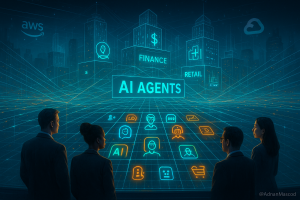To stay competitive, Asian insurers must reinvent how they attract, develop, and retain talent. That means ditching outdated HR playbooks and embracing a new leadership mindset built for speed, innovation, and humanity.
Based on insights from CHROs across Asia and industry research, here are the eight must-do priorities for insurers serious about future-proofing their workforce.
1 Elevate HR: The Power of the “G-3”
Talent cannot be an afterthought. Insurers need a leadership trio CEO, CFO, and CHRO co-owning:
Culture
Workforce capabilities
Strategic resource decisions
Remarkably, more than half of Southeast Asian CHROs come from outside traditional HR backgrounds making them uniquely positioned to drive commercial outcomes, not just hiring.
2 Make Talent a Boardroom Priority
Boards must serve as custodians of culture and capability, not just compliance. When talent strategy is reviewed alongside financial performance:
Succession pipelines expand beyond the CEO
Future skills are funded, not delayed
Purpose becomes a lived experience, not a brochure
Boards that invest in workforce resilience today build market leaders tomorrow.
3 Map Talent to Value Creation
Critical roles aren’t always glamorous but they’re often where profit is born. In Asian insurance, these include:
Capital and asset-liability management
Underwriting and pricing experts
Data analysts and digital distributors
Claims and customer experience leaders
These roles even several levels below the C-suite deserve priority recruitment, mobility, and rewards.
4 Build New Skills at Scale
Advanced analytics. AI. Human-centered design. Agile delivery. These are no longer “nice-to-haves.”
Winning insurers are:
Expanding talent sourcing across borders
Embracing hybrid and remote models
Creating inclusive cultures that amplify innovation
The goal: continuously reskill the workforce faster than the market evolves.
5 Design Career Journeys that Feel Human
Insurance careers span everyone from frontline agents to cybersecurity engineers. A one-size-fits-all experience guarantees frustration.
Employees want meaning, not just payroll. HR should:
Personalize development based on role and ambition
Focus on moments that matter (promotions, performance talks, tough news)
Foster real connection not transactional check-ins
A strong employee experience is now a top competitive advantage.
6 Reinvent HR as a Transformation Engine
Traditional HR models are too slow for today’s market. The role needs to develop into a strategic design partner. A data-based approach to issue solving
An adaptable, corporately integrated change agent
The days of HR working in the background have passed.
Using People Analytics to Reveal Hidden Value
The majority of insurers only skim the surface of the wealth of data they currently possess.
Identifying rising talents is possible with smart analytics.
Estimate attrition before it occurs.
Boost leader effectiveness
Customize your education and professional advancement
Data plus empathy results in more informed choices and greater loyalty.
- Be Flexible or Fail to Keep Up
Although insurance is known for being conservative, agility is now required.The future needs:
Structures that are leaner and have fewer levels of approval
Multidisciplinary groups resolving issues from start to finish
Employees who are empowered and trusted to act
In every market where it has been implemented, productivity and engagement increase when insurers embrace agile methods of operation.
8.The Way Ahead: Consider More Than Just Small Changes
Numerous Asian insurers acknowledge the difficulty, but they react too cautiously.
Winners in the future will be those who:
Consider talent a strategic advantage.
Make significant investments in new capabilities
Embrace flexible, empowered, high-trust cultures
Turn HR into an innovative powerhouse
Talent is not merely an HR issue; it is the main factor influencing the future prosperity of the insurance sector.
It is the insurers that have the courage to create a workforce that will influence the future.



